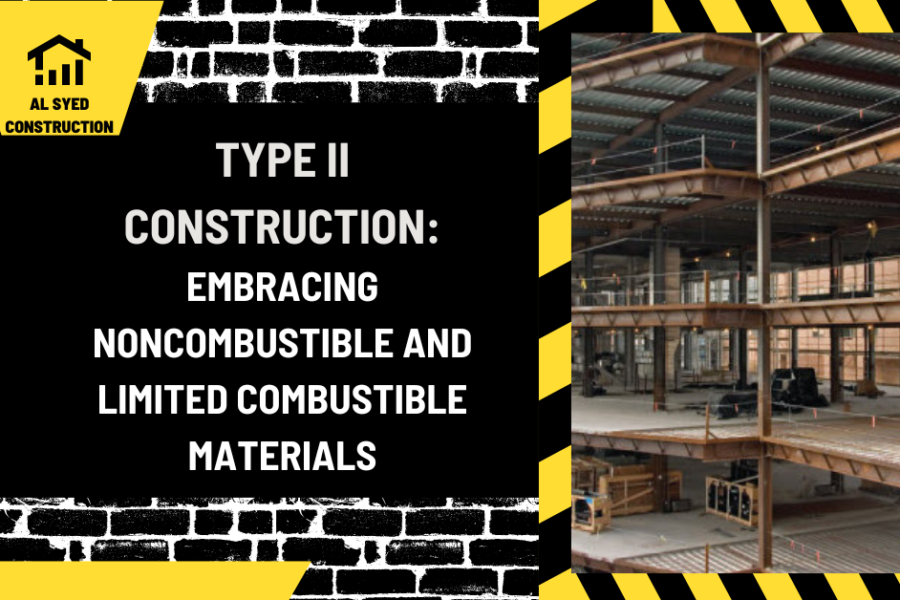Type II Construction: Embracing Noncombustible and Limited Combustible Materials
Introduction
In the realm of building construction, the choice of materials plays a pivotal role in determining the structure’s safety, durability, and fire resistance. Among the various construction types classified by the International Building Code (IBC), Type II construction stands out for its use of noncombustible or limited combustible materials in structural members. This article explores the characteristics, advantages, and applications of Type II construction in the modern building landscape.
Defining Type II Construction
Characteristics of Type II Construction
Type II construction, also known as noncombustible construction, is characterized by the use of materials that are either noncombustible or have limited combustibility for its structural components. This includes elements such as steel, concrete, and masonry, which do not ignite easily and contribute to the overall fire resistance of the building.
Fire Resistance Ratings
Structural members in Type II construction are required to have fire resistance ratings as specified by the IBC. These ratings determine the duration for which a structural component can withstand exposure to fire while maintaining its structural integrity. The use of noncombustible materials helps in achieving higher fire resistance ratings, enhancing the building’s safety in the event of a fire.
Advantages of Type II Construction
Enhanced Fire Safety
One of the primary advantages of Type II construction is its enhanced fire safety. Noncombustible materials reduce the risk of fire spread and contribute to the overall fire resistance of the building, providing more time for occupants to evacuate and for firefighters to respond.
Durability and Low Maintenance
Structures built with noncombustible materials are generally more durable and require less maintenance over time. Materials like steel and concrete are resistant to rot, pests, and weathering, contributing to the longevity of the building.
Applications of Type II Construction
Commercial and Industrial Buildings
Type II construction is commonly used in commercial and industrial buildings, such as offices, warehouses, and manufacturing facilities. The fire resistance and durability of noncombustible materials make them ideal for these settings, where safety and longevity are critical considerations.
Mixed-Use and High-Rise Buildings
The use of noncombustible materials is also prevalent in mixed-use and high-rise buildings. In these structures, the fire resistance of Type II construction is crucial for preventing the vertical spread of fire and ensuring the safety of occupants in upper floors.
Conclusion
Type II construction, with its emphasis on noncombustible and limited combustible materials, offers significant advantages in terms of fire safety, durability, and maintenance. It is a preferred choice for a wide range of building types, from commercial and industrial facilities to mixed-use and high-rise structures. As building codes and safety standards continue to evolve, the role of Type II construction in the modern building landscape remains vital, ensuring the safety and longevity of structures in an ever-changing urban environment.




